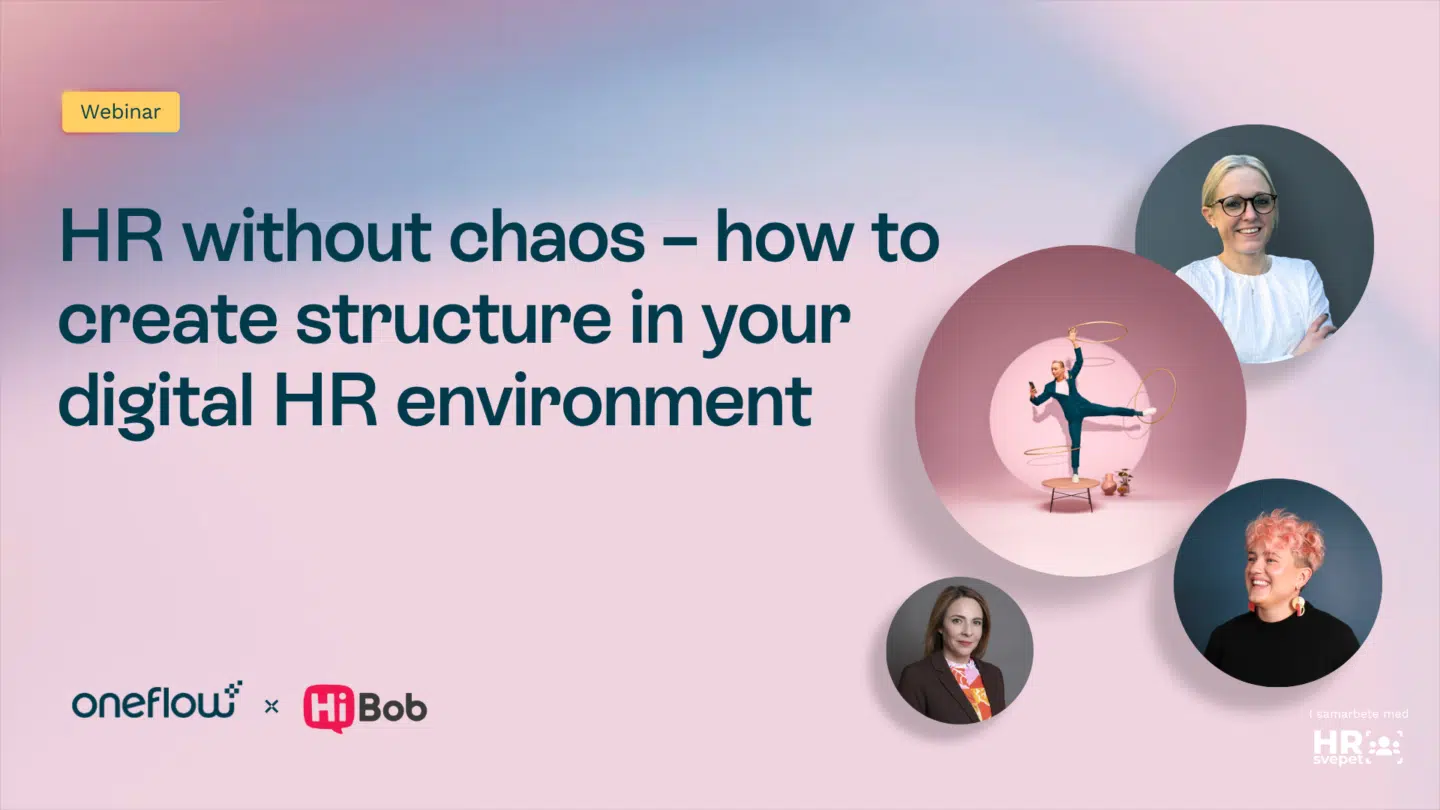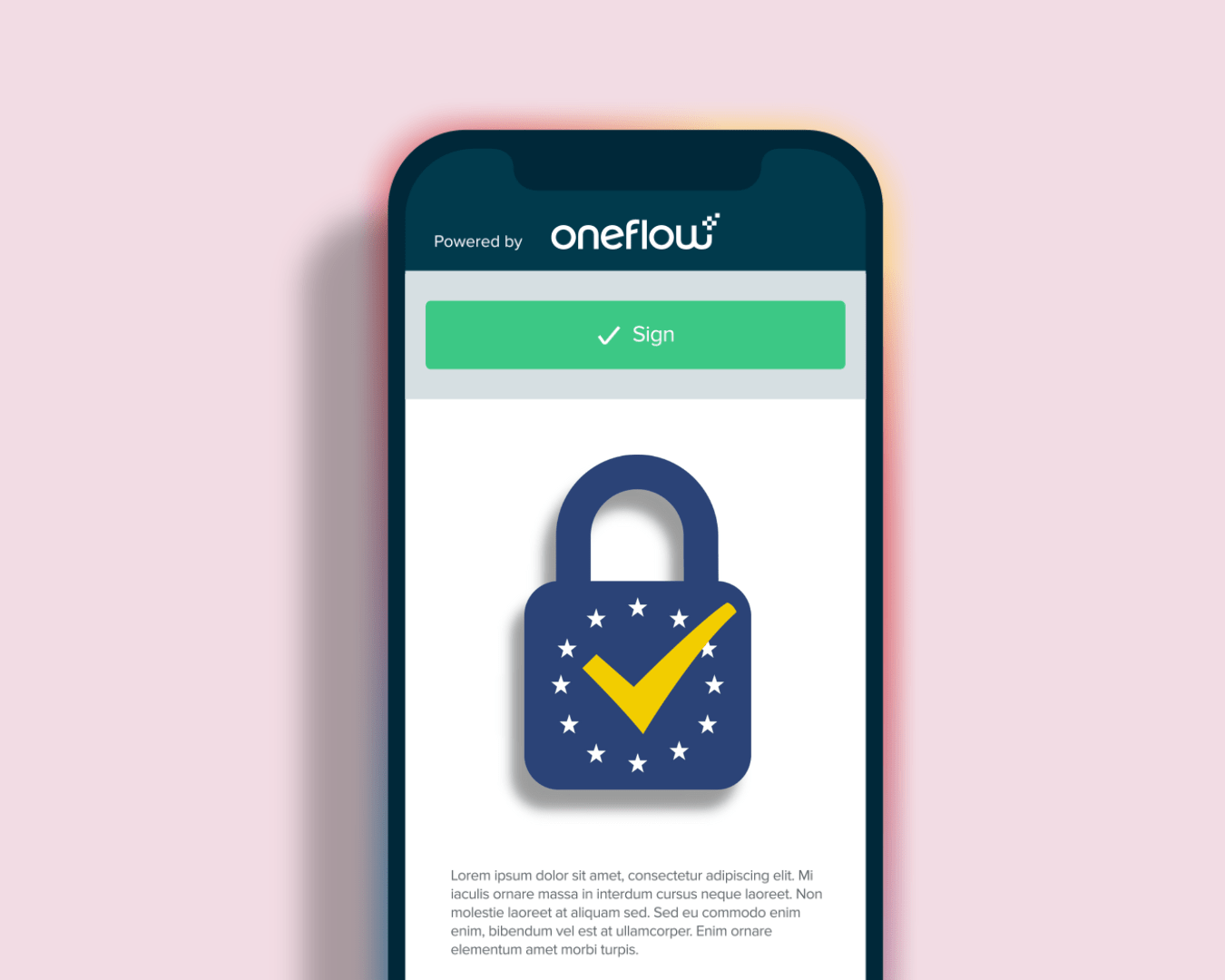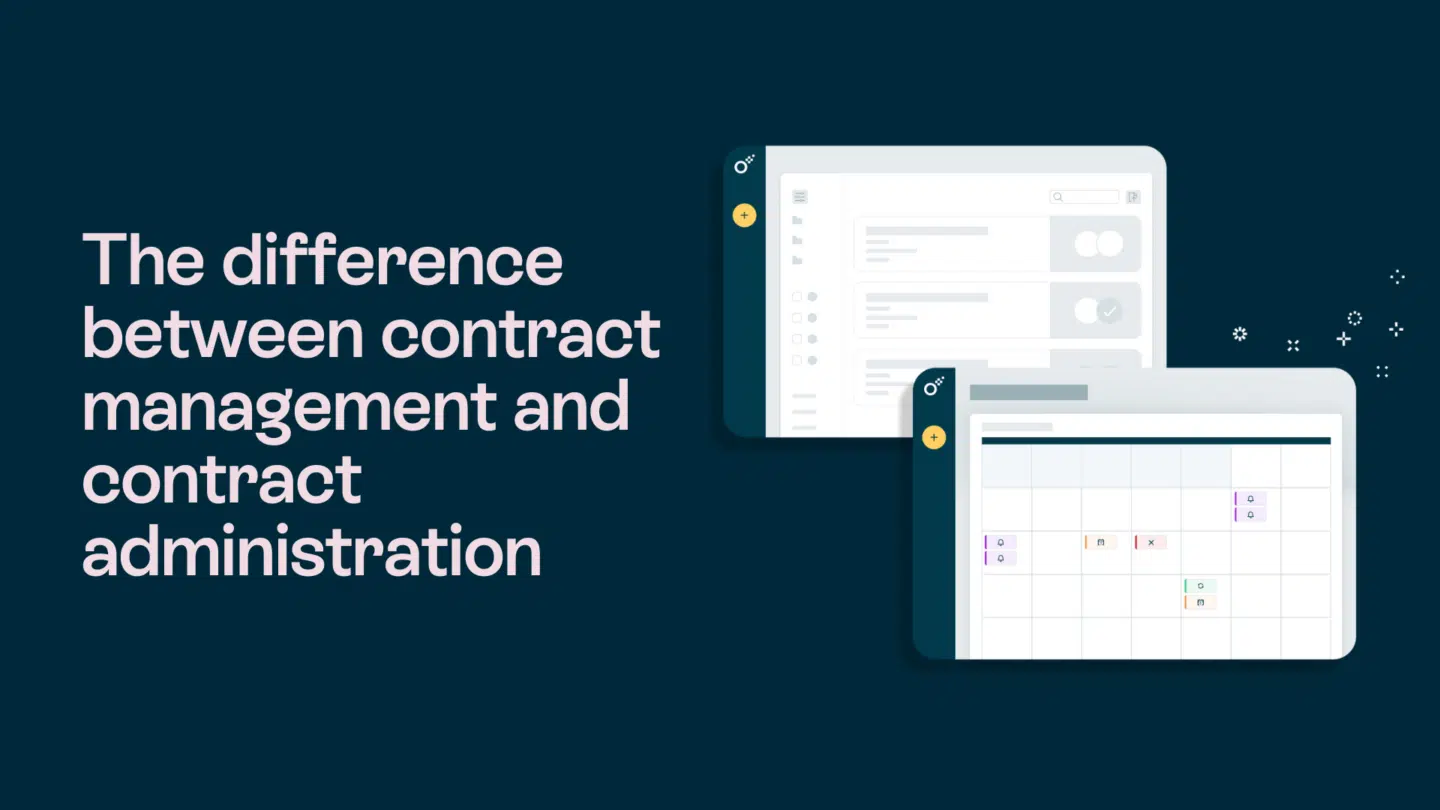That HR has gone digital is no news. But that doesn’t mean it’s automatically gotten easier. As new tools and systems are added at a rapid pace, the need for structure grows – both in day-to-day work and in the strategy behind the systems. In our webinar “HR without chaos – How to create structure in your digital work environment,” organized together with Hibob, we discussed what it takes to build a functioning HR ecosystem. One that doesn’t just look good on paper but actually works in practice.
The conversation was led by Marie Rockström from HerbertNathan & Co, alongside Liza Andersin from Keystone Education Group and Emilia Janis from Oneflow. Three different perspectives, but several shared conclusions.

A system landscape full of tools. But no connections.
What Marie and the team at HerbertNathan often see is that organizations have made big investments in HR systems or are gearing up for new ones. Still, HR often ends up juggling 10–15 different systems, while also relying on manual Excel sheets on the side. File transfers have to be done manually, information gets lost in the shuffle, and responsibilities for different processes are unclear.
A common piece of feedback from managers is that “there are too many systems, but I can’t find what I’m looking for anywhere.” And that experience is backed by the data. On average, companies use up to 897 digital tools, but only about 30 percent of those are integrated with each other.
Fragmented system landscapes create more problems than they solve
In HR, the number of modules and functions has doubled in a short time, not least since GDPR pushed the need for master data systems. But the increased availability of tools hasn’t automatically led to better structure. In fact, studies show that a fragmented system landscape often leads to more manual work, more errors, and more uncertainty about what actually applies.
This doesn’t just affect HR’s efficiency, it impacts the whole employee experience, and in the worst case, even health. When the tools people are expected to use at work don’t work, it creates frustration and insecurity. It might sound like a tech issue, but at the core, it’s about something else entirely: lack of strategy.
From excel chaos to something that actually works
When Liza joined Keystone in 2016, most HR tasks were handled in Excel. A few years later, in the middle of a growth journey with several international acquisitions, it became clear that something more sustainable was needed. An HR system that could not only handle the present but grow with the organization and create a cohesive system landscape. Keystone chose to switch to a system that could act as a hub for their entire HR setup, one focused on usability, structure, and integration.
The biggest problem? Lack of strategy
Technology itself is rarely the issue. But it’s common for companies to jump into a solution without first defining what they want to achieve. The result is often a patchwork of systems that don’t connect, rely on manual workarounds, and create more work in everyday life.
Marie compared it to buying clothes without knowing what’s already in your closet. No matter how nice the pieces are, if they don’t go together, it’s not going to work.

Make it user-friendly – for real
User-friendliness isn’t just about slick interfaces. It’s about making it easy to do the right thing. For Liza, that means reducing the need for manual input, creating clear workflows, and making sure the systems actually get used, by both managers and employees.
When everything runs in the background and data flows between systems without anyone having to think about it – that’s when you know you’ve come far.
Common pitfalls to avoid
Emilia pointed out a recurring mistake: building custom solutions that only work for your specific organization. It might feel right at the time, but it quickly becomes a roadblock to scalability and future development.
Instead, aim for standardization, document your data models, and see your systems as building blocks. That way, it’s easier to swap out components and grow with the organization.
The digital work environment is the work environment
When the Swedish Work Environment Authority visited Keystone, the inspection wasn’t about chairs or lighting, it was about their digital environment. How many tools are needed to complete a simple task? How much double work is happening each day? The digital environment is no longer just a support function. It is the work environment. And that needs to be reflected in how organizations build their internal systems.

Think holistically, not just about systems
The most important advice from the entire conversation was simple: start with the strategy. Build for the full employee journey – from first contact to final working day. Choose solutions that are flexible, scalable, and designed to work together. Not more tools, but the right tools. And the right connections between them.
6 steps to structure your digital HR environment
Finally, here are six concrete steps for anyone looking to bring order to a chaotic HR landscape:
Create a clear, long-term strategy
Start by defining the goal. What do you want to achieve – and why?
Make sure systems support both business goals and employees
A good HR system makes life easier for more than just HR.
Break down silos between HR, IT, and Finance
Think ecosystem, not departments. Together, you’ll create better workflows.
Prioritize change management and training
The systems themselves aren’t the solution, people need to want to and be able to use them.
Focus on security, simplicity, and scalability
Build for the future, not just the present.
Involve all stakeholders/IT from the start
Talk about integration as part of your business strategy, not just as a technical footnote.
Watch the webinar here (in Swedish)!
Oneflow – A seamless part of your ecosystem
At Oneflow, we know that systems that don’t talk to each other only create frustration. That’s why we offer integrations with most major tools on the market. from HRIS and ATS to CRM and ticketing systems. No matter what your system landscape looks like today, Oneflow can become a natural part of the whole.
Our open API makes it easy to integrate Oneflow with whatever tools you’re using – no fuss. That gives you a document workflow that’s both automated and tailored to your specific needs, whether you’re working with onboarding, signing, or complex processes across multiple platforms.
Want to see how Oneflow fits into your system environment?
Read more about our integrations here or book a demo with our team.








